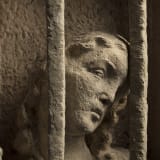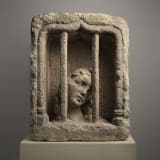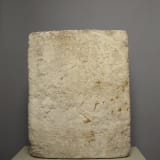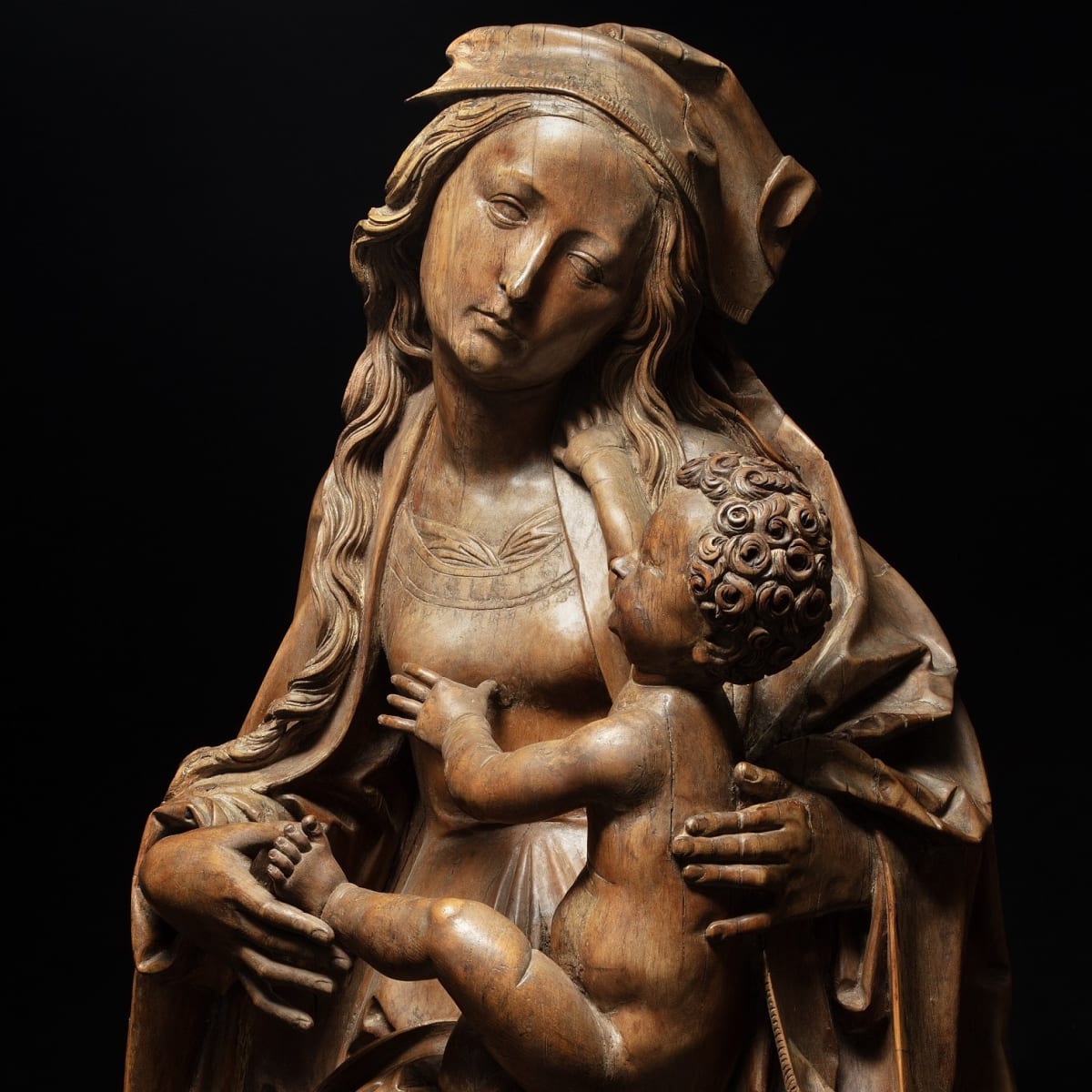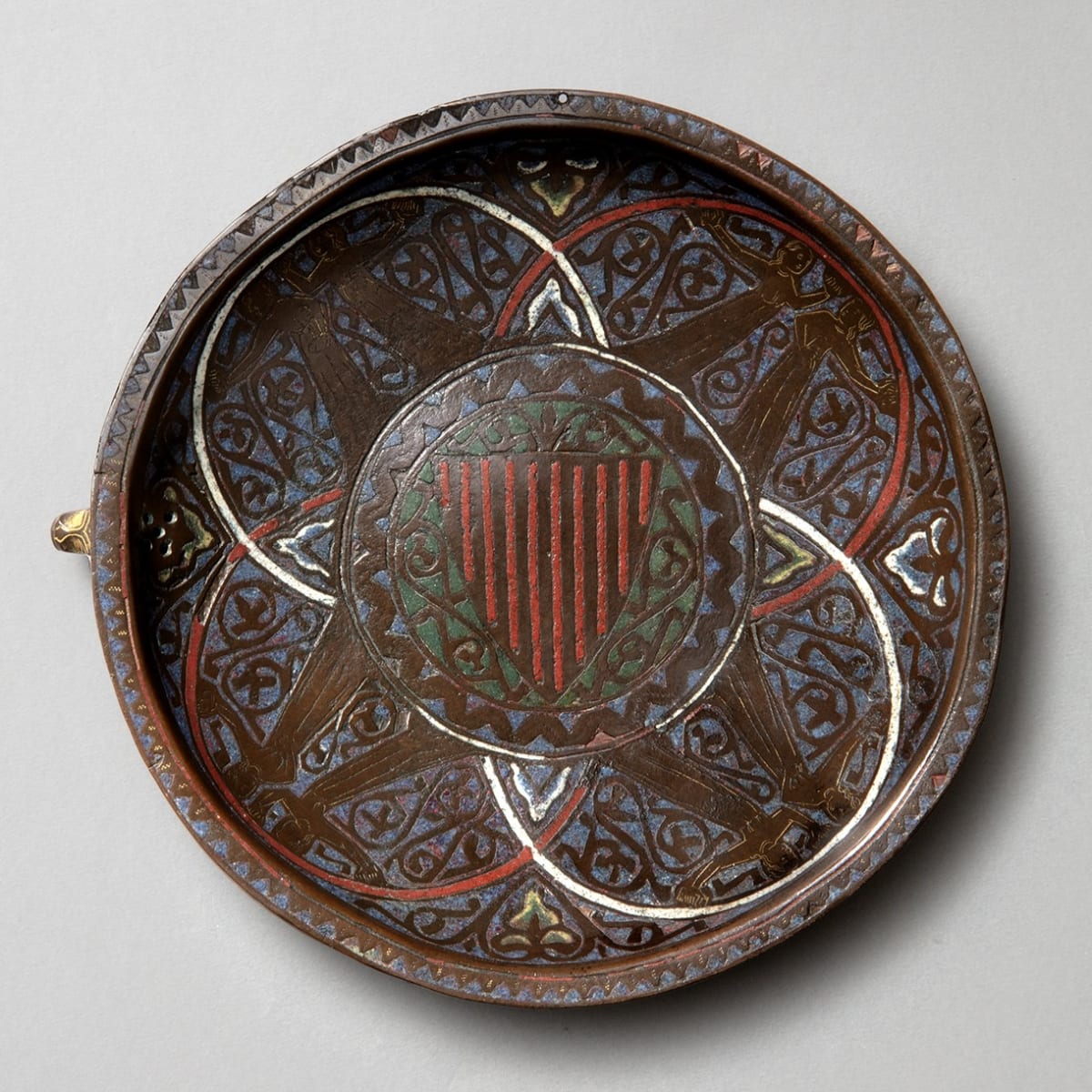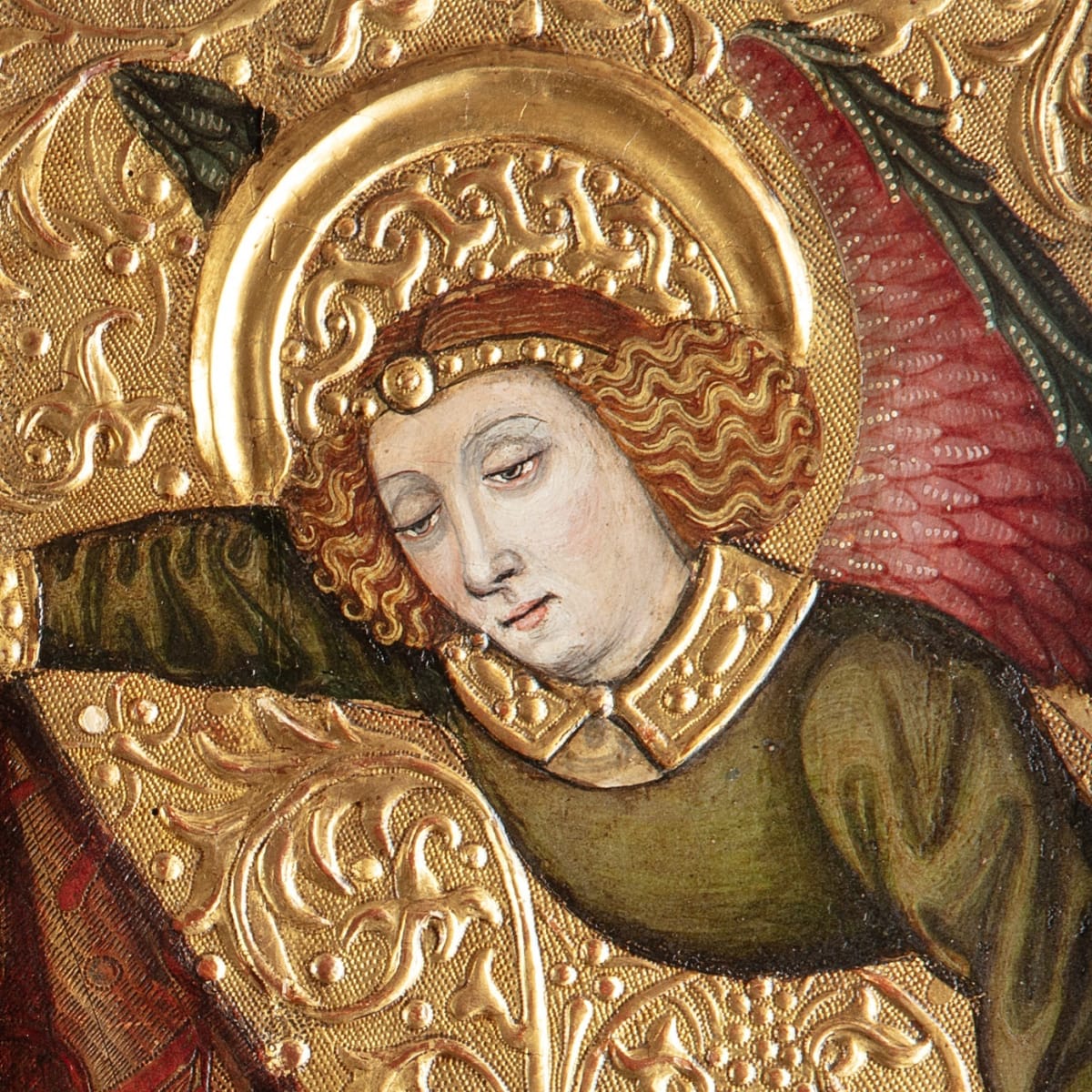



Saint Avia (The Jailed Woman)
Saint Avia of Sicily was a virgin martyr who was imprisoned for adhering to her Christian beliefs. While incarcerated, she miraculously received communion from the Virgin Mary, a moment in her story which is often depicted in late medieval art. This bust length sculpture of Saint Avia, along with the overtly window-like aspect of the surrounding stonework, would suggest a positioning at window height, set in to the wall of a church or chapel, although it is equally likely that the figure was placed outdoors or within a loggia space, a placement consistent with the wear to the exterior edges of the stone. This would have created a highly vivid relationship between spaces, and a potent image to which the medieval viewer would have prayed and beseeched for aid.
